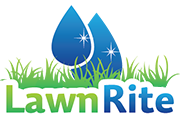Mastering Hedge Trimming: Tips for Beautiful, Healthy Hedges with Lawn Rite
Date: 12 Oct 2023
Pruning or trimming your hedges is an essential aspect of gardening and general property maintenance. It not only enhances the aesthetic appeal of your property but also promotes healthy hedge growth. While seasoned gardeners are well-versed in the art of hedge trimming, beginners may find it challenging to get started. With the right knowledge and skills, you can ensure your hedges thrive and maintain their beauty. In this guide, we'll share some fundamental tips for successful hedge trimming, now proudly brought to you by Lawn Rite.
Understanding the Basics of Hedge Trimming
Before you pick up your cutting shears or electric hedge trimmer, it's crucial to grasp the fundamentals of hedge trimming. This includes understanding why we trim hedges, the best time to do it, and which hedges are best suited for trimming.
What is Hedge Trimming?
Hedge trimming involves cutting or removing dead and overgrown branches from hedges, typically using shears or a hedge trimmer. This process encourages new growth and keeps hedges looking neat and tidy.When is the Best Time to Trim?
Effective hedge trimming isn't just about technique but also timing. Late winter to early spring is generally the optimal time for trimming, although some hedges may require more frequent attention.Trimming New Hedges
Newly planted hedges need extra care during their formative years, typically the first two years. Regular formative trimming ensures dense and healthy growth, which is essential for establishing an attractive hedge.Trimming Established Hedges
Most established hedges benefit from trimming about twice a year. The first trim should occur at the beginning of spring to remove stray branches and deadwood, allowing sunlight to reach the inner branches. The second trim is done at the beginning of summer to maintain the hedge's shape.Selecting the Right Tools for Hedge Trimming
When it comes to hedge trimming, choosing the appropriate tools is essential. Hand shears are popular among home gardeners and beginners for their quietness, affordability, and safety. Hedge trimmers, available in petrol, electric, and battery-powered options, are better suited for larger areas and those with more experience.
Safety equipment, such as earmuffs, a respirator or mask, and gloves, is essential. Additionally, having a rake and a garbage bag on hand helps manage debris efficiently.
Best Practices for Hedge Trimming
While hedge trimming may seem straightforward, following these recommended tips and tricks will ensure your trimming efforts are successful:
Prepare Your Tools: Ensure your cutting tools are sharp, charged (if applicable), and ready for use. Dull blades or cutting teeth can lead to uneven results. Keep your tools clean and well-maintained.
Start with Dead or Diseased Branches: Begin by trimming away dead or diseased branches. Removing these branches promotes new growth and allows light to penetrate the inner areas of the hedge.
Cut Branches Clean: Always aim to cut branches close to the nodes or trunk to prevent diseases from entering the stubs and creating an uneven appearance.
Regular Post-Trim Observation: Trimming isn't the end of the process. Regularly check the condition of your hedge and consider fertilizing and applying mulch to encourage growth. While maintaining hedges may seem labor-intensive during their formative years, once they are established, they require less attention.
Expert Advice and Services from Lawn Rite
For further guidance on hedge trimming and professional assistance, turn to Lawn Rite. Our comprehensive hedge trimming service ensures that your hedges remain healthy, lush, and visually appealing. Our team of experts can provide tailored advice specific to your hedges and garden. Contact us today to learn more about how Lawn Rite can help you achieve the perfect hedges for your property!
Back...
